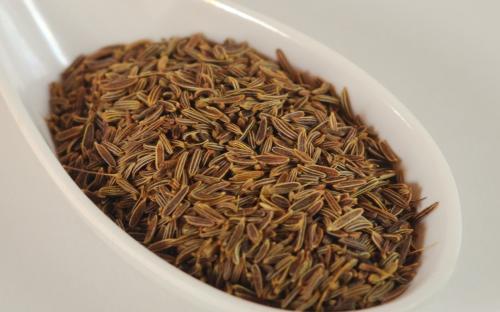Caraway (shahi Jeera)
Caraway falls into both categories of herb and spice, as it is the seeds that are used primarily. It resembles cumin and the two are often confused in Asia.
Caraway– Names in different Indian Languages.
Hindi - Shahi Zeera, Bengal – Shai Jire, Gujrati – Zeru, Punjabi – Shahi Zeera
Tamil - Jeeragum, Urdu – Shahi Zeera
Nutritional Information
Caraway fruits may contain 3% to 7% essential oil. The aroma of the oil is mostly dominated by carvone (50 to 85%) and limonene (20 to 30%). The primary medical benefit of caraway is its effect on digestion. It is a carminative which means it helps with gas and digestion. It is helpful to chew caraway seeds after a heavy meal. It has been used for colic as it is a light sedative and it can be used to settle a queasy stomach.
Culinary Uses
The fruits, usually used whole, have a pungent, anise-like flavor and aroma.] They are used as a spice in breads, especially rye bread.
It is suggested to add seeds after a dish is cooked, as a long simmer may turn the flavour bitter. It has a sweet warm aroma with a flavour similar to aniseed and fennel. It can also be used in cakes cookies, soups, omelets, rice and pasta dishes, cheese spreads and vegetable dishes. Caraway seeds were customarily chewed to freshen breath. The essential oil extracted from caraway is used to flavour liquers, mouthwashes, toothpastes and chewing gums. It is also an important addition to Indian garam masala
Storage
Caraway seeds can hold their flavor for months stored in airtight containers and kept away from light.
Precaution
It has a distinctive flavor than cumin so the two are not substitutes.
